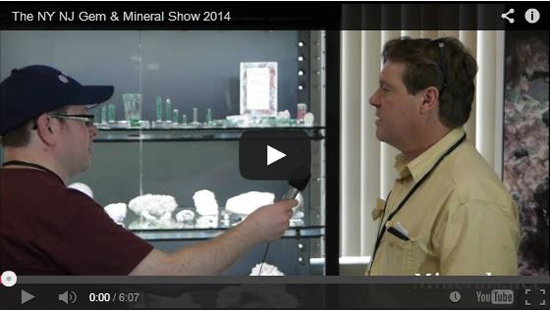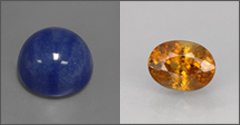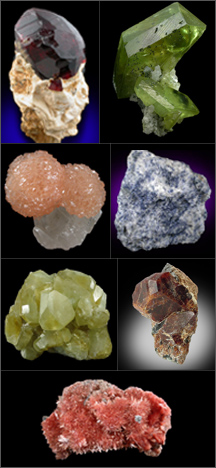
Welcome to the July 2014 Edition of the Minerals.net Newsletter!
|
NY-NJ Show VideoMinerals.net has produced a new video covering the 2014 NY-NJ Show. This video is a recap from Hershel Friedman of Minerals.net of the 2014 NY/NJ Gem & Mineral Show in the NJ Convention & Exposition Center in Edison, New Jersey.  |
New Minerals and Gemstones Added
New gemstone pages added include the following: 
|
Mineral Localities on our Mineral PagesOne of the best features of our detailed mineral guide is the locality section. This section is thought-out and researched for every single mineral in our database. We try to include a list of the most relevant and practical localities. We noticed that many reference books leave out important localities, and others may focus on more on particular regions. For example, some books focus on European localities, while others put a bigger emphasis on North American occurrences. Dealing with a worldwide audience, we wanted our locality information to place equal emphasis on all regions worldwide. On the flipside, certain websites will include every single locality the mineral has been found in. While this is very useful as a powerful research tool, it limits the full appreciation and focus on the minerals. We have therefore chosen to include all significant or classic localities which are known to be producers of specimens of a particular mineral. Determining important localities can be somewhat arbitrary, and there are many times we are forced to make a decision whether to include a locality or leave it out. We generally select those localities that are considered the most important from a collectors viewpoint, whether they be classic occurrences or localities they likely will encounter when purchasing minerals or viewing collections. Certain common minerals like Quartz and Calcite were particularly challenging, because there are so many localities. In these cases we made the decision to include the localities that we felt were the most relevant for collectors to encounter on a frequent basis. Our research in the localities involves several sources. This includes first and foremost extensive background knowledge of minerals and localities from our authors. We spend much time researching books and field guides, looking at photos from Mindat and other websites, and culling information from mineral periodicals such as the Mineralogical Record and Rocks and Minerals. In addition to listing classic localities, we are also always on the lookout at shows for new localities that are producing specimen-grade minerals for collectors. Sometimes a locality yields only one or two pockets of outstanding specimens, and other times it is a steadier producer. With the exception of the occasional one-of-a-kind finds, we generally will limit the locality data to include significant finds that produced a healthy volume of specimens. Our locality information will include both closed localities that are no longer producing, as well as active collecting sites. The quality and quantity will determine a locality's eligibility, not the status of the site. We try to group our geographic localities by regions. There are no hard rules for this, but generally we move along the globe from Asia, Europe, Africa, and South America to North America. When a mine or deposit is significant to the occurrence, we mention its name; otherwise we stick to the municipality of the locality. We often try to give a more specific region to the locality to more easily identify it, and always will mention a county within American localities. To eliminate confusion caused by localities and regions, we separate each distinct locality with a semicolon. |
Give us Feedback!We appreciate feedback! Please email any comments or suggestions, and any errors or bugs you may find on our website. To contact us, please visit our Contact page. |
Copyright 2013 Hershel Friedman | Minerals.net, all rights reserved.
Remove me from this list
 Many new pages have been added with comprehensive details and excellent photos. Please view the new minerals added below:
Many new pages have been added with comprehensive details and excellent photos. Please view the new minerals added below: